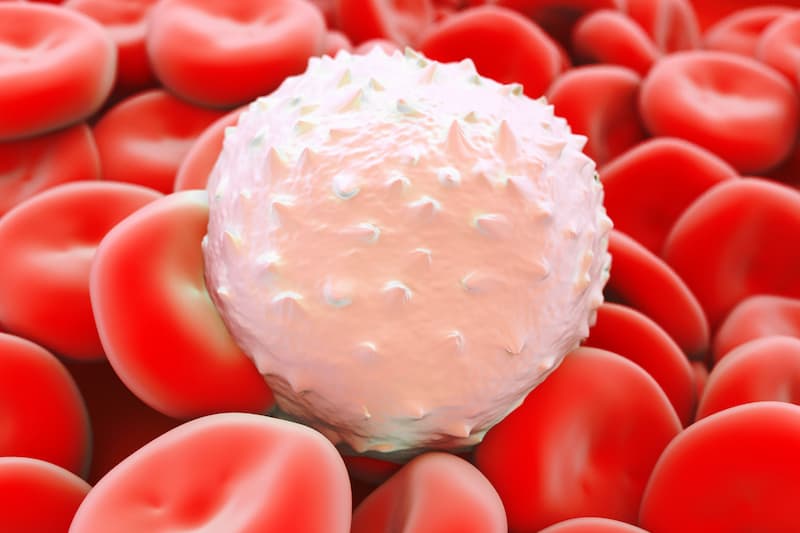Talquetamab Elicits Sustained Responses in Pre-Treated R/R Multiple Myeloma
Cytokine release syndrome events primarily occurred during step-up and the first full dosing cycle in patients with relapsed/refractory multiple myeloma.
The proportion of patients achieving very good partial responses or better and complete response or better was high across every subgroup except for those with baseline extramedullary plasmacytomas.

Talquetamab-tgvs (Talvey) elicited a sustained high overall response rate (ORR) in patients with heavily pre-treated, relapsed or refractory multiple myeloma, according to results from the phase 1/2 MonumenTAL-1 trial (NCT03399799; NCT04634552) published in The Lancet Haematology.1
Findings from the study revealed that at a median follow-up of 25.6 months (IQR, 8.5-25.9) among patients receiving 0.4 mg/kg of once weekly talquetamab, the ORR was 74% (95% CI, 66%-81%). Additionally, at a median follow-up of 19.4 months (IQR, 9.2-20.7) in those receiving 0.8 mg/kg every other week, the ORR was 69% (95% CI, 62%-77%). The proportion of patients achieving very good partial responses (VGPRs) or better and complete responses (CR) or better was high in both groups. Furthermore, it was high across every subgroup except for those with baseline extramedullary plasmacytomas.
Furthermore, post hoc analysis showed an ORR of 72% (95% CI, 59%-83%) in patients who received prior CAR T-cell therapy, 58% (95% CI, 37%-77%) in those who received prior bispecific antibody therapy, 74% (95% CI, 57%-88%) among those who received BCMA-targeting CAR T therapy as the immediate last line of therapy, and 68% (95% CI, 45%-86%) in those who had received BCMA-targeting CAR T before the last line of therapy.
“[T]alquetamab continued to show deep and durable responses with longer follow-up in T-cell redirection therapy [TCR]–naïve, heavily pretreated patients with relapsed or refractory multiple myeloma in this post hoc analysis,” lead investigator Ajai Chari, MD, hematologic oncologist and director of the Multiple Myeloma Program at the University of California, San Francisco (UCSF) Health, UCSF Helen Diller Family Comprehensive Cancer Center, wrote in the publication with study coinvestigators.1 “Activity results were promising in patients with previous TCR exposure, which is a population of patients with an emerging unmet need; most of these therapies were BCMA-targeting.”
Patients in the phase 1/2 trial were randomly assigned to receive either talquetamab at 0.4 mg/kg once weekly or 0.8 mg/kg every 2 weeks among those who had not received prior TCR therapy. In those who had received prior TCR therapy, they were treated with either schedule, with switching to less frequent dosing allowed in the event of PR or better in phase 1 only, or for adverse effect (AE) management. Step-up dosing was used to mitigate cytokine release syndrome (CRS) events, with 0.01 mg/kg and 0.06 mg/kg administered for step-up doses 1 and 2 in both groups, and a dosage of 0.3 mg/kg given for the third step-up dose in the biweekly group.
Among patients in the 0.4 mg/kg weekly (n = 143) and 0.8 mg/kg biweekly (n = 154) groups, the median age was 67 years (IQR, 58-72) and 67 years (IQR, 58-74), respectively. A total of 45% and 42% of respective groups were female, 90% and 82% were White, and 60% vs 55% had an ECOG performance status of 1.
Furthermore, in each respective cohort, 23% vs 27% had extramedullary plasmacytomas, 31% vs 30% had high-risk cytogenetics, and 43% vs 44% had International Staging System (ISS) stage I disease. In the respective groups, the median time since diagnosis was 6.7 years (IQR, 4.3-9.7) vs 6.3 years (IQR, 3.8-10.4), the median number of previous lines of therapy was 5.0 (IQR, 4.0-6.0) vs 4.5 (IQR, 4.0-6.0), and 79% vs 79% had received previous stem-cell transplantation.
The primary end point of the phase 2 portion of the study was ORR. Secondary end points included duration of response, VGPR/CR or better rates, time to response, progression-free survival, overall survival, and safety.2
The most common AEs in the weekly and biweekly groups were CRS events, and in patients who received previous TCR, it was taste changes. Hematologic events were the most common grade 3/4 events, with 31% vs 26% of the weekly and biweekly groups experiencing grade 3/4 anemia, 30% vs 22% experiencing grade 3/4 neutropenia, 26% vs 26% experiencing grade 3/4 lymphopenia, and 20% vs 18% experiencing grade 3/4 thrombocytopenia.
References
- Chari A, Touzeau C, Schinke C, et al. Safety and activity of talquetamab in patients with relapsed or refractory multiple myeloma (MonumenTAL-1): a multicentre, open-label, phase 1–2 study. Lancet Haematol. 2025;12(4):269-281. doi:10.1016/S2352-3026(24)00385-5
- A study of talquetamab in participants with relapsed or refractory multiple myeloma (MonumenTAL-1). ClinicalTrials.gov. Updated March 30, 2025. Accessed April 1, 2025. https://tinyurl.com/2mf4hyxv
Newsletter
Stay up to date on recent advances in the multidisciplinary approach to cancer.